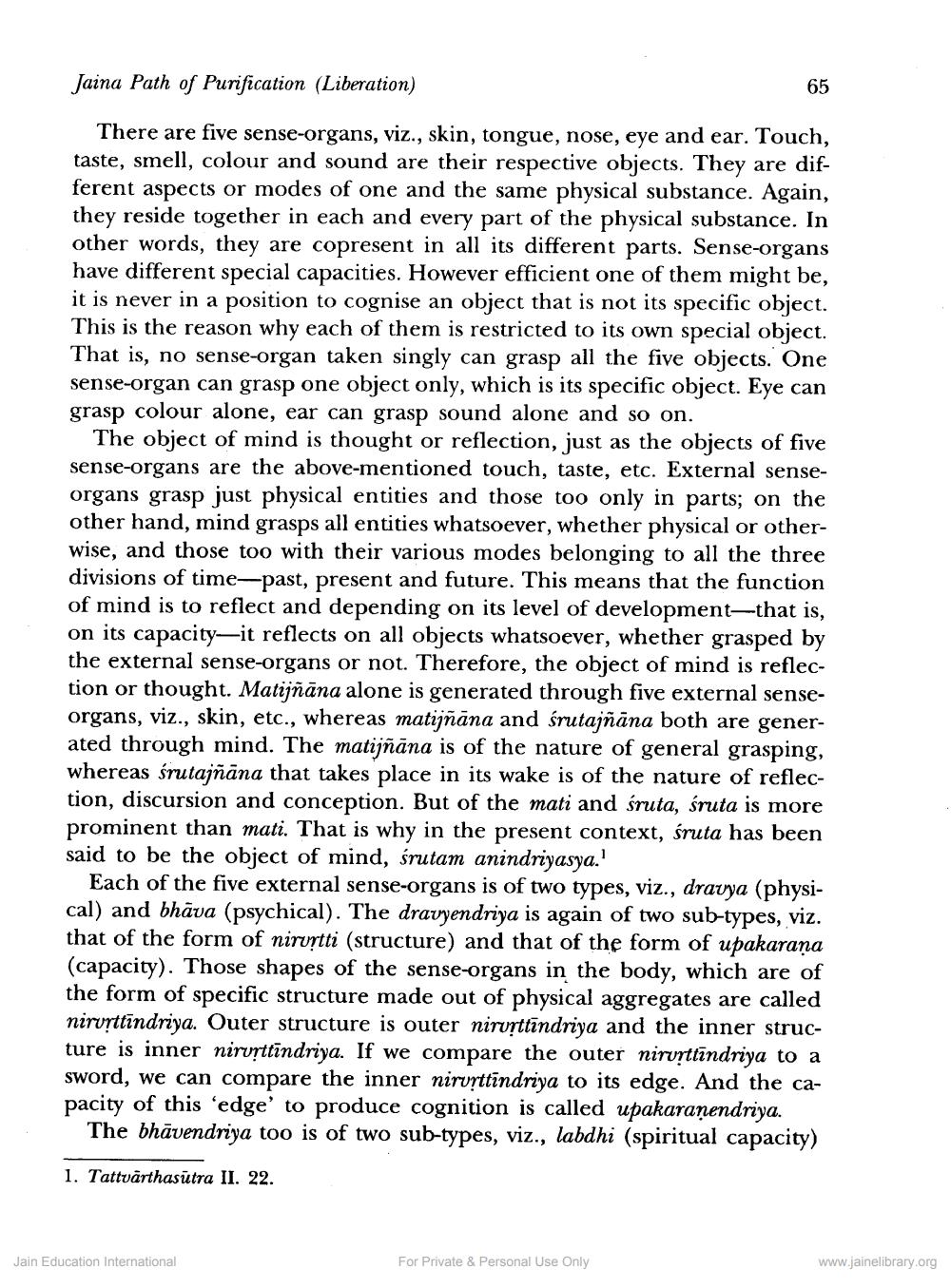________________
Jaina Path of Purification (Liberation)
There are five sense-organs, viz., skin, tongue, nose, eye and ear. Touch, taste, smell, colour and sound are their respective objects. They are different aspects or modes of one and the same physical substance. Again, they reside together in each and every part of the physical substance. In other words, they are copresent in all its different parts. Sense-organs have different special capacities. However efficient one of them might be, it is never in a position to cognise an object that is not its specific object. This is the reason why each of them is restricted to its own special object. That is, no sense-organ taken singly can grasp all the five objects. One sense-organ can grasp one object only, which is its specific object. Eye can grasp colour alone, ear can grasp sound alone and so on.
The object of mind is thought or reflection, just as the objects of five sense-organs are the above-mentioned touch, taste, etc. External senseorgans grasp just physical entities and those too only in parts; on the other hand, mind grasps all entities whatsoever, whether physical or otherwise, and those too with their various modes belonging to all the three divisions of time-past, present and future. This means that the function of mind is to reflect and depending on its level of development—that is, on its capacity-it reflects on all objects whatsoever, whether grasped by the external sense-organs or not. Therefore, the object of mind is reflection or thought. Matijñāna alone is generated through five external senseorgans, viz., skin, etc., whereas matijñāna and śrutajñāna both are generated through mind. The matijñāna is of the nature of general grasping, whereas śrutajñāna that takes place in its wake is of the nature of reflection, discursion and conception. But of the mati and śruta, śruta is more prominent than mati. That is why in the present context, śruta has been said to be the object of mind, śrutam anindriyasya.'
Each of the five external sense-organs is of two types, viz., dravya (physical) and bhava (psychical). The dravyendriya is again of two sub-types, viz. that of the form of nirvṛtti (structure) and that of the form of upakarana (capacity). Those shapes of the sense-organs in the body, which are of the form of specific structure made out of physical aggregates are called nirvṛttindriya. Outer structure is outer nirvṛttīndriya and the inner structure is inner nirvṛttindriya. If we compare the outer nirvṛttīndriya to a sword, we can compare the inner nirvṛttindriya to its edge. And the capacity of this 'edge' to produce cognition is called upakaranendriya. The bhāvendriya too is of two sub-types, viz., labdhi (spiritual capacity)
1. Tattvärthasutra II. 22.
Jain Education International
For Private & Personal Use Only
65
www.jainelibrary.org




